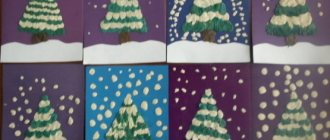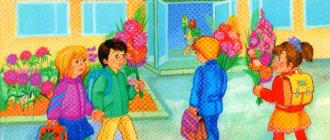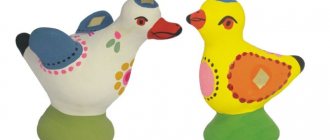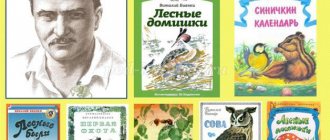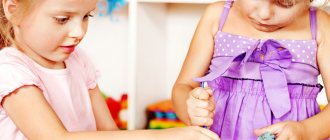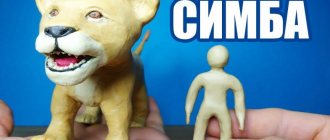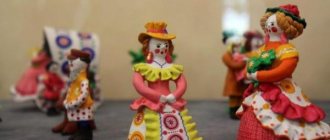Abstract of the GCD on artistic creativity (modeling) “Rays for the sun”
Goal: developing skills in working with plasticine, awakening interest in modeling.
Tasks:
1. Improve children’s ability to roll a piece of plasticine using circular movements of the palms, giving it a spherical shape. 2. Teach the technique of flattening a ball on a horizontal surface to obtain a flat image of the original shape. 3. Strengthen the children’s ability to separate small lumps from a large piece of plasticine and roll them between their palms with direct movements of both hands. 4. Develop the ability to navigate on a sheet of paper. 5. Develop fine motor skills. 6. To cultivate in children responsiveness, kindness, the ability to sympathize with characters, and the desire to help them.
Materials for the lesson:
• thick cardboard of light blue color with silhouettes of a bee, bird, hare, rooster, size 1\2 A4; • plasticine of yellow, red, orange colors; • hand wipe; • modeling board.
Progress of the lesson
1. Organizational part.
The teacher offers to guess the riddle.
Who gets up earlier than everyone else in the morning? Who gives everyone warmth and light? (Sun.)
The teacher shows a picture of the sun.
- Right. The sun wakes up before everyone else, washes itself from the clouds to be clean, and then rises high into the sky.
The cloud hides behind the forest, The sun looks from the sky and is so pure, kind, radiant. If we could get him, we would kiss him!
- Guys, look how sunny it is? (Round) Children, following the teacher, draw the sun in the air with their fingers. - And its rays are straight, like our hands. You and I have two hands, but how many rays does the sun have? (A lot.) What sunshine? (Children's answers...), And what are the rays of the sun? (Children's answers...), How many rays does the sun have? (Children's answers...). That's right, a lot. — The sun’s rays are everywhere: from the side, above, and below. He needs a lot of rays to warm everyone, to illuminate everyone with a bright light, to wake them up in the morning - flowers, birds, bunnies and squirrels, boys and girls. This is how good our sun is! But one day the sun did not come out into the sky. It was a cloudy and gloomy morning. Apparently the sun is not well, he does not have the strength to open his eyes and illuminate the earth with light. And the animals and birds became sad that they could no longer play and have fun. You and I will have to help out our friends while the sun is sick. But what are we going to make it from? Guys, look, I have plasticine, you and I can make our sun using plasticine. To make the sun look like a real one, let's remember what it is like. (Round.). And what else does our sun (Rays) have? What color could it be? (Red, yellow, orange).
2. Practical part.
Children can choose from red, yellow or orange plasticine. Place one part between your palms and roll the ball in a circular motion from left to right, pressing on it with your palm. Place the finished ball in the middle of the cardboard and lightly press on it to flatten it.
Finger gymnastics (after attaching the sun, children clench their fingers into a fist and unclench them, 3-4 times)
They applied and pressed, Our hands did not get tired.
Pinch off a small piece from the second part, place it between your palms and roll the sausage with straight movements of both hands. The resulting ray-column is attached to the sun, pointing it at a bee or bunny, lightly pressing it against the picture along the entire length of the ray. Make the remaining rays in the same way.
Finger gymnastics (after attaching several rays, children clench their fingers into a fist and unclench them, 3-4 times)
They applied and pressed, Our hands did not get tired.
- Look how light it has become in our room! It is your suns that shine so brightly. Guys, in the picture the sun has woken up and invites you to play with it.
3. Final part
Children perform the motor exercise “The sun rose in the morning.”
The sun rose in the morning (Stretching.) And went for a walk (Walking in place.) And on our street he liked everything (Tilts his head left and right.) The sun ran along the golden path. (Running in a circle.) And the sun came straight into our window. (Folding hands into a “window” shape.) Together we went with the sun to kindergarten. (Walking in a circle.) The sun caressed all the children at once. (Stroking himself on the head.)
- What a wonderful, kind sun! I stroked all the guys so that you grow up strong, healthy and kind, like the sun.
The teacher takes turns patting all the children on the head, calling each one by name.
Author: Gafarova Rimma Zainagatdinovna, teacher, MBDOU d/s “Belochka”, Kamensk-Uralsky, Sverdlovsk region, Russia
The article is published in the author's edition
Summary of a lesson on modeling with children of primary preschool age “Sun for animals”
Municipal preschool educational institution
combined kindergarten No. 390
ABSTRACT
modeling classes for preschool children
"Sunshine for animals"
Author-developer:
teacher Shuvalova Nina Mikhailovna
Nizhny Novgorod
2010
SUMMARY OF THE CLASS ON STYLE “SUN FOR ANIMALS” /2 JUNIOR GROUP!
OBJECTIVES: EDUCATIONAL. Teach children
convey the image of the sun in a plastic way, using the technique of smoothing plasticine along the contour. Strengthen the ability to roll out plasticine with straight movements, creating rays. DEVELOPMENTAL. Develop and strengthen fine motor skills of the hands. To develop aesthetic perception in children. EDUCATIONAL. To create in children an emotional attitude towards the poetic image. To foster in children a sense of empathy for the characters and a desire to help them. PRELIMINARY WORK. Reading K. Chukovsky’s fairy tale “The Stolen Sun”, looking at illustrations depicting the sun. Drawing the sun with colored pencils and paints. Conversations with children about fairy tale characters. MATERIAL FOR THE CLASS. For the teacher, illustrations for a fairy tale: sun, cloud, hare, sparrow. Outline of the sun on blue cardstock for display. For children - sheets of blue cardboard with an outline of the sun, yellow plasticine.
PROGRESS OF THE CLASS. 1. Preliminary conversation. Children sit around the teacher on the carpet.
The teacher reads to the children an excerpt from K. Chukovsky’s fairy tale “The Stolen Sun”, showing the corresponding illustrations. The sun walked across the sky and ran behind a cloud. The bunny looked out the window. It became dark for the bunny. The gray sparrow is crying. Come out, sunshine, quickly! We feel sad without the sun. We can’t see a grain in a field. The teacher asks the children what the animals should do now without the sun, inviting the children to join in the discussion of what they read. Next, the teacher asks the children to remember who helped save the sun? The teacher tells the children that the bear that saved the sun cannot help us because it is looking for its cubs. Children offer to help the animals themselves. The sun can be drawn with paints or pencils. You can also cut out the sun from colored paper and give it to animals. The teacher listens carefully to the children's advice, praises them for their resourcefulness and desire to help, and invites the children to go look for the sun. 2. PHYSICAL CLASS In the morning the sun rises Higher, higher, higher. By night the sun will set Lower, lower, lower. Okay, okay, Sunny is laughing. And under the sun everyone sings merrily. After the game, the teacher takes out the sun - a ready-made sample - and invites the children to go to the tables.
3. RESEARCH ACTIVITIES. The teacher offers to look at a sample of the sun. With the help of questions, children determine the shape of the sun, what parts it consists of./circle, sticks-rays./ Next, the children name the color, with the help of the teacher they draw conclusions why the sun is yellow. The color is warm, so it warms everyone up. Then the teacher suggests looking at the contours of the sun laid out on the tables. The teacher asks the children to run their finger along the outline in order to visually and visually remember the shape of the sun. Next, children are asked to move their finger from the contour to the center of the circle, explaining this by saying that so that the sun does not lose the shape of the circle, they should not go beyond the contour line with their finger. After finger research, the teacher reminds the children how to use plasticine when doing work (pinch off small pieces from a large one and smooth them evenly from the outline to the center.) Then the children, together with the teacher, remember rolling out the plasticine with straight movements (sausages) for rays. 4. PRACTICAL ACTIVITY. After all the research and explanations, the teacher invites the children to start working on their own. During independent activities, the teacher encourages children and helps unsure children. At the end of the lesson, the teacher praises the children for their work and reads an excerpt from the fairy tale: The bunnies and squirrels are happy, the boys and girls are happy. Well, thank you guys for the sunshine. The bunny and the sparrow thank the children for the beautiful sunshine and invite the children for a walk. 5
.FOLLOW-UP WORK. After classes, in your free time, offer the children the didactic game “Feed the Hare and the Sparrow.”
Literature.
- Berseneva G.K. Textile. Dough. Paper. Homemade crafts. M.: Astrel Publishing House LLC: AST Publishing House LLC, 2001.
- Dankevich E.V. We make it from salt dough. St. Petersburg: Publishing House "Crystal", 2001.
- Kiscalt Isolde. Salty dough. M.: AST-PRESS, 2001.
- Kozlina A.V. Manual labor lessons. M.: Mosaic-Synthesis.
- Komarova T.S., Savenkov A.I. Collective creativity of children. M.: Pedagogical Society of Russia, 2000.
- Khalezova N.B. and others. Modeling in kindergarten: a book for kindergarten teachers. M.: Education, 1986.
- Khalezova N.B. Folk sculpture and decorative modeling in kindergarten: A manual for teachers. M.: Education, 1984
- Sensorimotor development of preschool children in fine arts classes. Bezrukikh M.M. 2001
- "Childhood. Program for the development and education of children in kindergarten." V.I. Loginova, T.I. Babaeva
- Raising a child’s sensory culture” L.A. Venger, E.G. Pilyugina
- “Theory and methodology of visual activity in kindergarten” V.B. Kosminskaya, E.I. Vasilyeva
Summary of the lesson on modeling “Radiant Sun” Senior group
"Radiant Sun"
Tasks:
— to arouse in children the desire to create an image of the sun based on folk crafts and book graphics (based on illustrations for folk nursery rhymes and songs); learn to create the image of the sun using plastic means; - show options for depicting sun rays using decorative elements (dot; circle; straight, broken, wavy, intermittent flagella, as well as a curl; leaf; trefoil, etc.) - continue mastering the technique of relief modeling. Reinforce sculpting techniques. - develop imagination, creativity, fine motor skills, sense of color, rhythm, shape and composition. - cultivate interest in folk art.
Preliminary work
Acquaintance with the image of the sun in works of decorative and applied art and book graphics. Examination of book illustrations in collections of songs, nursery rhymes, and folk tales in order to enrich impressions and ideas about the options for depicting the sun. A conversation about the sun as the source of life on earth and as one of the main images of folk art. Creating portraits of the sun in drawings and applications.
Materials:
cardboard squares measuring 15x15 cm, plasticine, stacks, beautiful buttons and beads for eyes, rags, a toothpick stick.
Progress of the lesson
Educator: Guys, I suggest you listen and guess the riddle:
Not high, not low, Not far, not close, A ball floats in the sky, red-hot like fire. He warms the whole world And does not know fatigue, Smiles in the window, And everyone calls him... ( sun
).
Educator: I offer it to you. Guys, remember the folk nursery rhymes, calls about the sun:
Little sunshine, look out the window! Sunny, dress up, Red, show yourself! Sunshine, sunshine, Red seed! Come out quickly, be kinder to us, sit on a stump, shine all day!
Educator: Guys, what words usually describe the sun in poems and songs, why is it called red (beautiful)? Since ancient times, when even your grandmothers and great-grandmothers were not in the world, people called all the most beautiful and kind things red: “red sun”, “red day” (holiday), “red word”, “red maiden”. They even made up proverbs, for example: “A bird is red with its feathers, but a man is with its mind,” “Spring is red with flowers, and a hut with pies.” Red means beautiful. We looked at the image of the sun in objects of decorative and applied art, in book illustrations. Remember how the sun is depicted in them?
Yes, in different ways (in the form of a circle, several circles, a circle with rays-curls, rays-dots, rays-wavy lines, etc.) (Tables are displayed depicting decorative options (circle, circle with dots, circle with curls, circle with wavy lines)).
Today in class we will create our own suns with you. Let's sculpt a kind sun, bright, big, warm, beautiful, with rays - wavy lines or curls. Our suns will be very beautiful in color - red, orange, pink, yellow, crimson.
Now let’s play a little (physical education).
(Children stand in a circle, squat)
The sun rose in the morning (get up, stretch)
And off we went for a walk.
(they walk in place)
And on our street (turns of the body,
He liked everything.
spreading his arms to the sides)
The sun ran (running in place)
golden path,
And the sun came in (they imitate the window with their hands)
Directly to our window!
Together we set off (walking in place)
With the sun to kindergarten.
The sun caressed (each child puts his
All the guys at once! hands on neighbors' shoulders)
The teacher invites the children to sit at the tables.
A finger warm-up game
“Sunny Bunnies”
is being held Sunbeams (rotation of hands with fingers up)
They play on the table
(in the same position, fingers tap on the table).
I’ll beckon them with my finger
(palms turned towards you, alternate swaying of fingers from thumb to little finger),
Let them run towards me
(“wind” towards themselves).
Well, catch it, catch it quickly, catch it from the right, catch it from the left
(arms to the sides, swings left and right)...
He ran to the ceiling, jump-jump
(pulling up with both hands, lowering the arms).
Show me your palms - right and left! Quickly squeeze your skillful fingers into your fist! Unclench... Examine... And quickly tell me: Why do we, children, need these dexterous palms (children perform movements according to the text)
?
(Children's answers)
Educator: Look at your hands! For boys they are strong and strong, for girls they are gentle and affectionate, and for all of you they are skillful and hardworking. Today you and I will sculpt a portrait of the sun, and our hands will have to work hard. We will sculpt our suns on a base plate. Let's imagine the miracle sun in all its glory. We take a piece of plasticine, roll it into a ball, slightly flatten it into a flat cake and press it against the background in the very center of the plate - this is a solar circle (disk). Using a toothpick stick, mark the locations of the rays around the sun. Now let's start sculpting them. To do this, take a piece of plasticine of a different color, divide it into several parts and turn them into rays (the teacher clarifies the children’s ideas about what shape decorative rays can be and once again draws attention to the decorative table).
Let's stick beautiful rays around the sun. They can be the same or different in size and shape, single-color or multi-color. Children work independently. As the lesson progresses, the teacher provides children with individual assistance in choosing a composition and arrangement of rays of different shapes, reads nursery rhymes and poems about the sun:
Like a bright orange, the sun came out of the aspens, red, ruddy, called by everyone everywhere! Red, red, Clear, clear!.. (G.R. Lagzdyn)
Bell sun, Rise early, Wake us up early: We should run to the fields, We should welcome spring!
Educator: Guys, we agreed to sculpt portraits of the sun. What must be sculpted in order to get a portrait (children remember that they need to depict eyes, nose and mouth)? How to show that the sun is smiling cheerfully?
Children offer options for depicting a smile using plastic means.
At the end of the lesson, an express exhibition of portraits of the cheerful sun is held.
